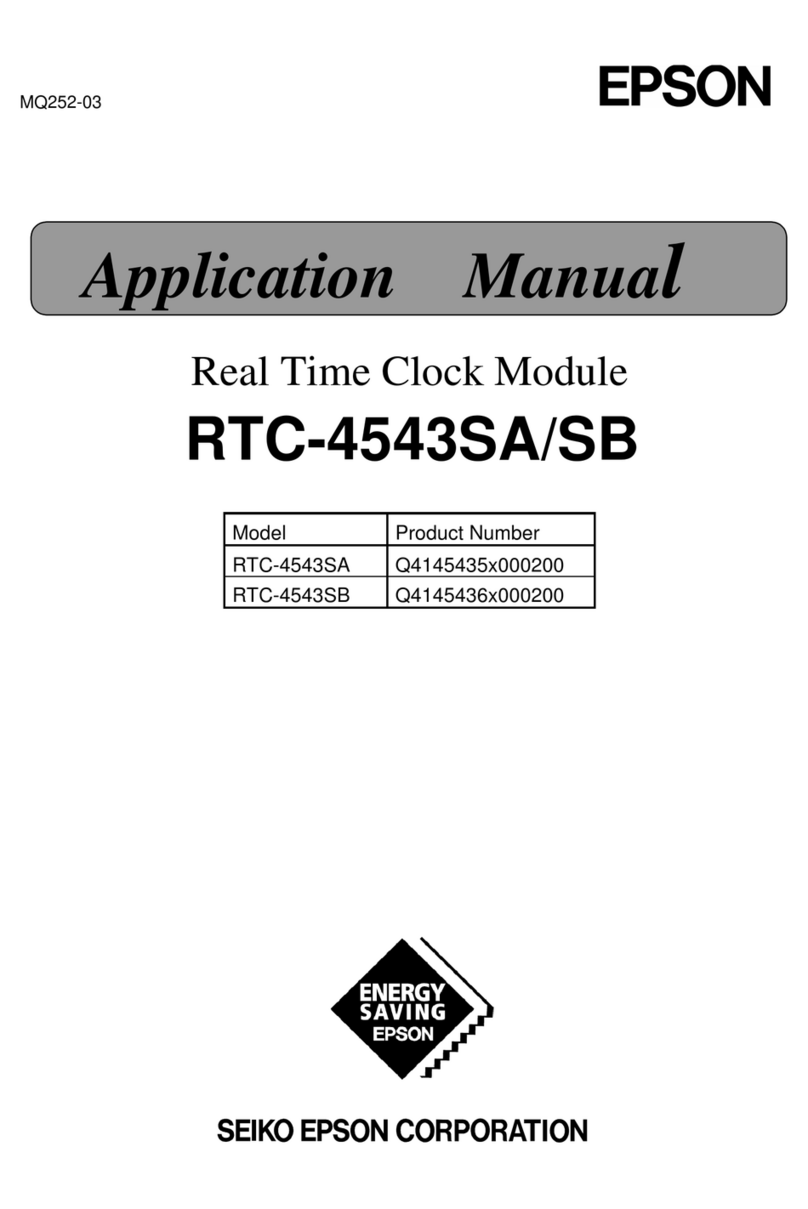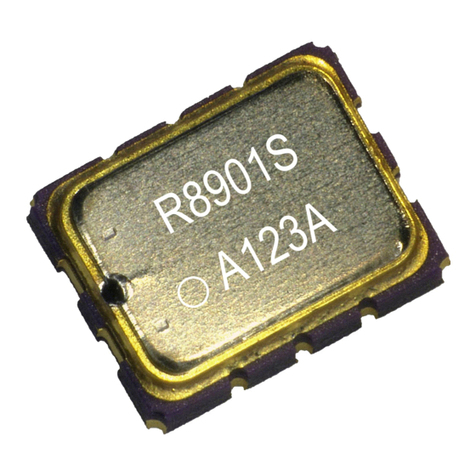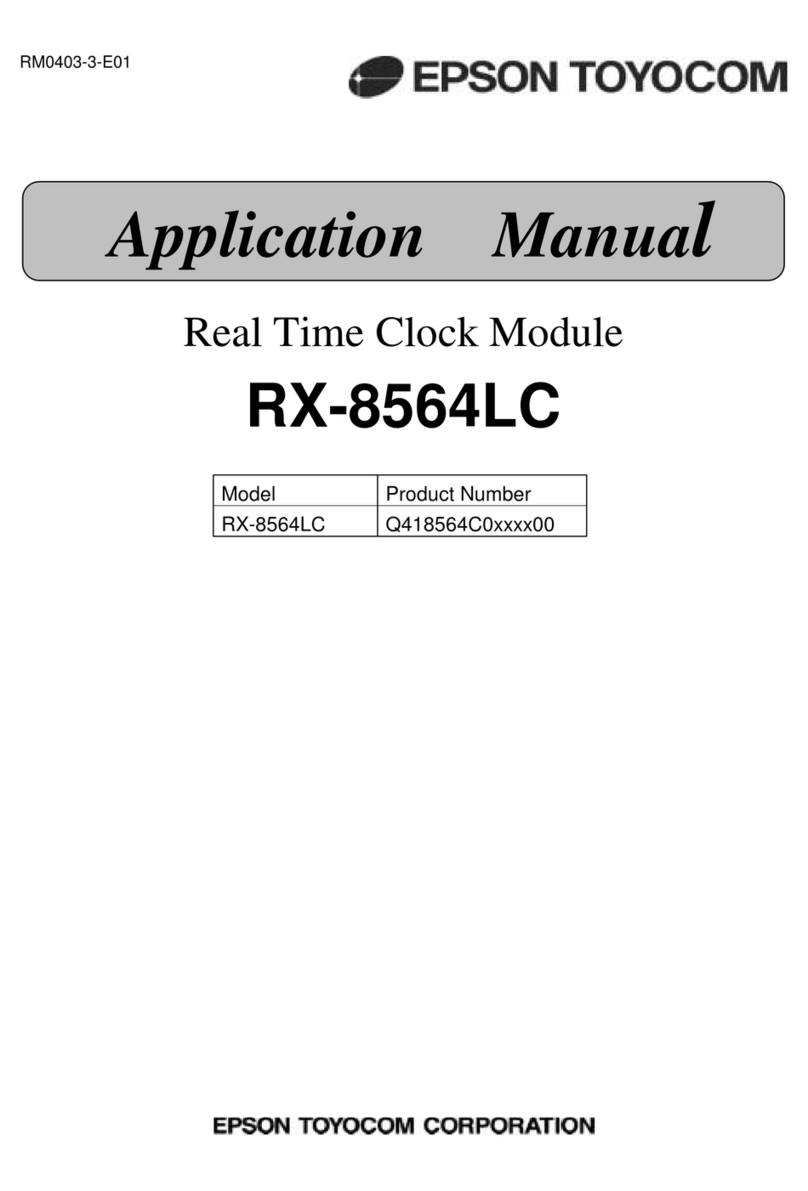
RA8804 CE
ETM60E-02
Table of Contents
1. Overview...................................................................................................................................................... 1
2. Block Diagram............................................................................................................................................. 1
3. Terminal description.................................................................................................................................... 2
3.1. Terminal connections.................................................................................................................................................2
3.2. Pin Functions.............................................................................................................................................................2
4. Absolute Maximum Ratings ........................................................................................................................ 3
5. Recommended Operating Conditions......................................................................................................... 3
6. Frequency Characteristics .......................................................................................................................... 3
7. Electrical Characteristics............................................................................................................................. 4
7.1. DC Characteristics.....................................................................................................................................................4
7.2. AC characteristics......................................................................................................................................................5
8. Use Methods............................................................................................................................................... 6
8.1. Description of Registers.............................................................................................................................................6
8.1.1. Write/Read and Bank Select..........................................................................................................................6
8.1.2. Register table (Basic time and calendar register)...........................................................................................6
8.1.3. Register table (Time stamp, EVIN, SOUT, Timer)..........................................................................................7
8.1.4. Quick Reference ............................................................................................................................................7
8.2. Details of Registers....................................................................................................................................................8
8.2.1. Clock counter (SEC - HOUR).........................................................................................................................8
8.2.3. Alarm registers.............................................................................................................................................10
8.2.4. Fixed-cycle timer control registers................................................................................................................10
8.2.5. Extension register ........................................................................................................................................10
8.2.6. Flag register.................................................................................................................................................11
8.2.7. Control register.............................................................................................................................................13
8.3. Fixed-cycle Timer Interrupt Function .......................................................................................................................15
8.3.1. Diagram of fixed-cycle timer interrupt function.............................................................................................15
8.3.2. Related registers for function of fixed-cycle timer interruption......................................................................16
8.3.3. Timer register...............................................................................................................................................16
8.3.4. Fixed-cycle timer interrupt interval (example)...............................................................................................18
8.3.5. Fixed-cycle timer start timing........................................................................................................................18
8.4. EVIN Interrupt and Time stamp Function.................................................................................................................19
8.4.1. Diagram of EVIN interrupt function...............................................................................................................19
8.4.2. Operation example of Time-Stamp function.................................................................................................20
8.4.3. Related registers for EVIN Interrupt and Time stamp Function....................................................................20
8.5. SOUT Interrupt Function..........................................................................................................................................23
8.5.1. Operation example of SOUT function. .........................................................................................................23
8.5.2. Related registers for SOUT interrupt functions.............................................................................................24
8.6. Time Update Interrupt Function...............................................................................................................................25
8.6.1. Time update interrupt function diagram........................................................................................................25
8.6.2. Related registers for time update interrupt functions....................................................................................26
8.7. Alarm Interrupt Function..........................................................................................................................................27
8.7.1. Diagram of alarm interrupt function..............................................................................................................27
8.7.2. Related registers for Alarm interrupt function...............................................................................................28
8.7.3. Examples of alarm settings..........................................................................................................................29
8.8. About the interrupt function for operation /INT = “L”interrupt output.......................................................................30
8.9. Temperature compensation function. ......................................................................................................................30
8.9.1. Temperature compensation function............................................................................................................30
8.9.2. Related registers for temperature compensation function............................................................................30
8.10. Reading/Writing Data via the I2C Bus Interface.....................................................................................................31
8.10.1. Overview of I2C-BUS.................................................................................................................................31
8.10.2. System configuration..................................................................................................................................31
8.10.3. Starting and stopping I2C bus communications..........................................................................................32
8.10.4. Data transfers and acknowledge responses during I2C-BUS communications..........................................33
8.10.5. Slave address ............................................................................................................................................33
8.10.6. I2C bus protocol..........................................................................................................................................34
8.11. Backup and Recovery............................................................................................................................................35
8.12. About access at the time of backup return and Initial power supply ......................................................................36
8.13. Flow chart..............................................................................................................................................................37
8.14. Connection with Typical Microcontroller ................................................................................................................40
8.15. When used as a clock source (32 kHz-TCXO) ......................................................................................................40
9. External Dimensions/Marking Layout...................................................................................................... 41
9.1. RX8804CE..............................................................................................................................................................41
9.1.1. External dimensions.....................................................................................................................................41
9.1.2. Marking layout..............................................................................................................................................41
10. Application notes..................................................................................................................................... 42
































